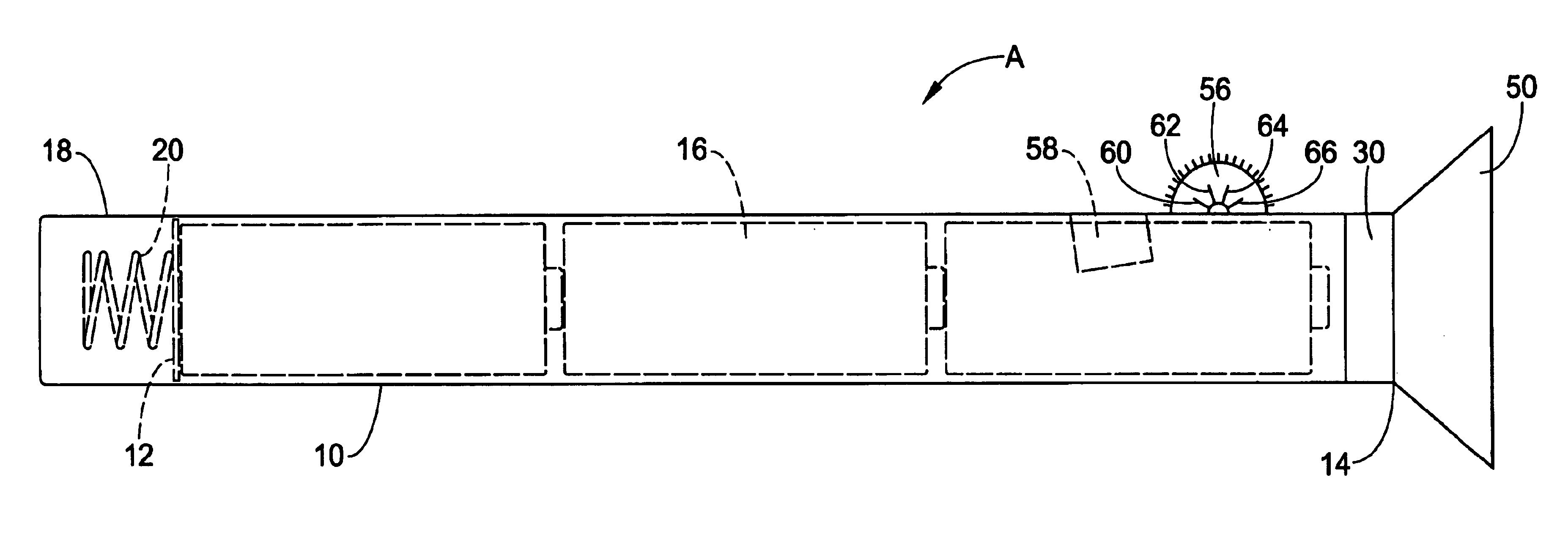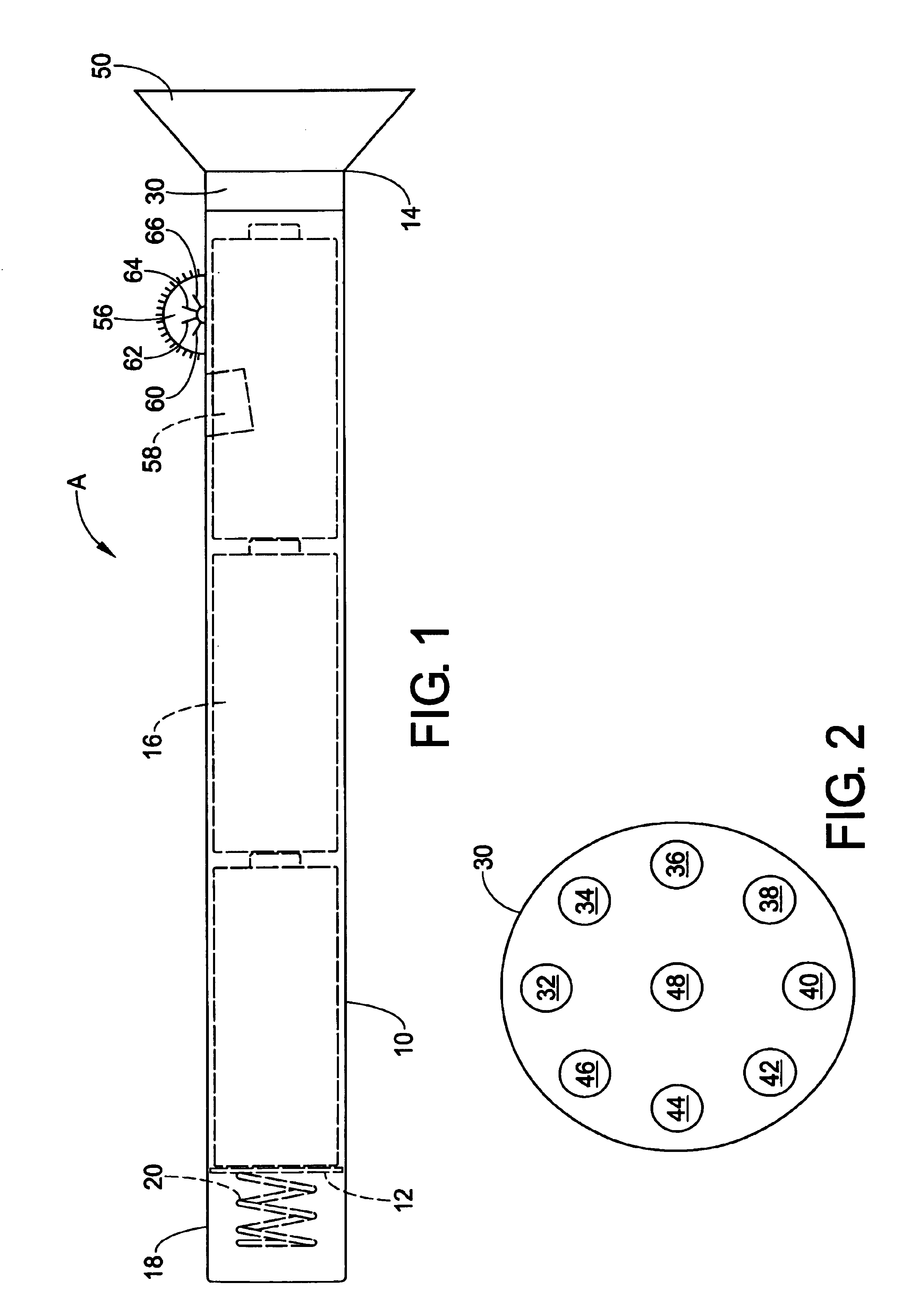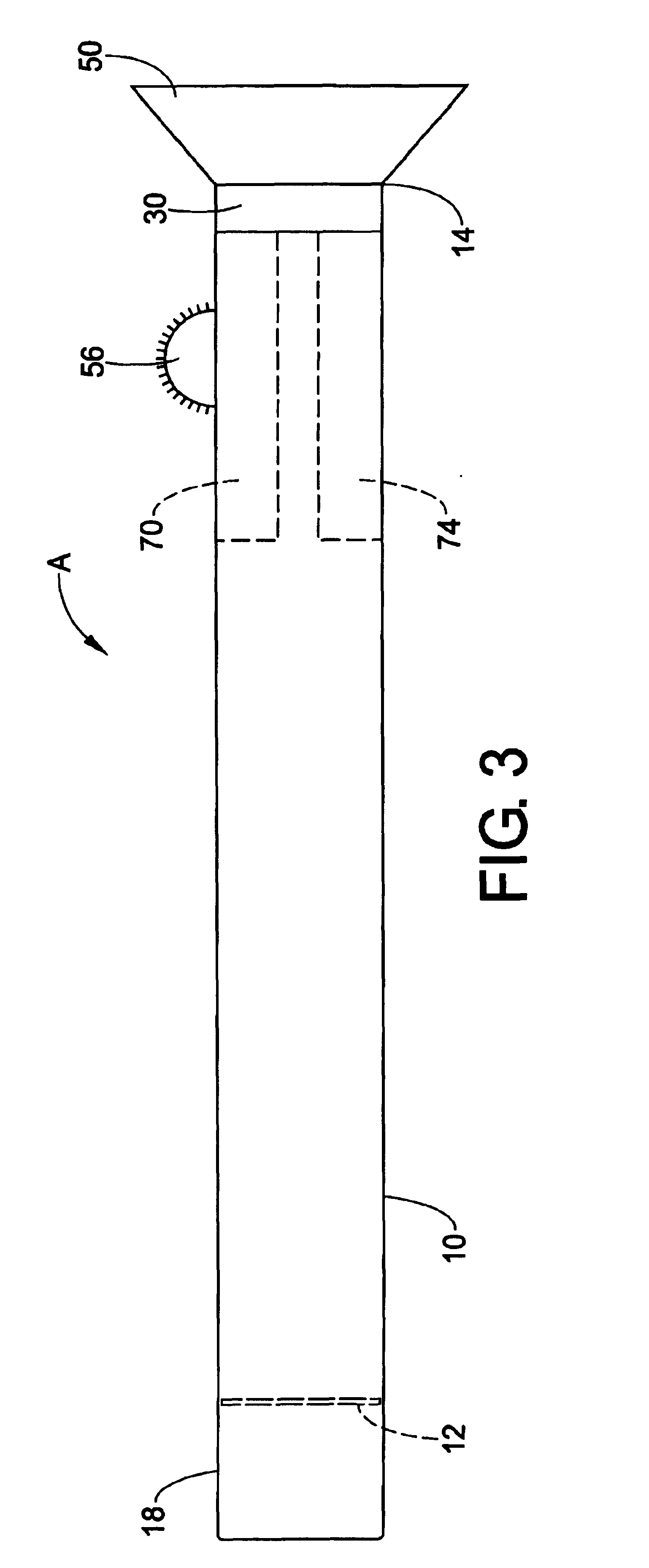Flashlight with light emitting diode source
- Summary
- Abstract
- Description
- Claims
- Application Information
AI Technical Summary
Benefits of technology
Problems solved by technology
Method used
Image
Examples
Embodiment Construction
[0023]FIG. 1 shows an exemplary embodiment of a flashlight A in accordance with the present invention. The flashlight includes a housing 10 having a first end 12 and a second end 14. Although the housing is preferably a polymeric material and is shown as being substantially cylindrical, other materials or configurations (such as a pistol grip conformation) may be used without departing from the scope and intent of the present invention. A series of batteries 16 are enclosed within the housing and are disposed along a longitudinal axis of the housing. The batteries function as the power source for the flashlight and may be of any desired size and type, including but not limited to alkaline, nickel cadmium, standard, heavy duty, lithium, nickel metal hydride, and others. The power source can be a capacitor or other energy storage means due to the inherent high efficiency of the device.
[0024]A battery cap 18 defines a first end 12 of the housing and functions to secure the batteries in...
PUM
 Login to View More
Login to View More Abstract
Description
Claims
Application Information
 Login to View More
Login to View More - R&D
- Intellectual Property
- Life Sciences
- Materials
- Tech Scout
- Unparalleled Data Quality
- Higher Quality Content
- 60% Fewer Hallucinations
Browse by: Latest US Patents, China's latest patents, Technical Efficacy Thesaurus, Application Domain, Technology Topic, Popular Technical Reports.
© 2025 PatSnap. All rights reserved.Legal|Privacy policy|Modern Slavery Act Transparency Statement|Sitemap|About US| Contact US: help@patsnap.com



